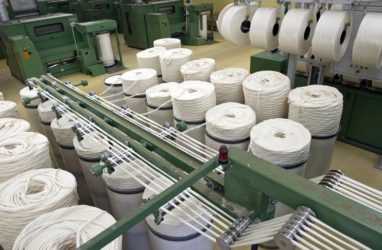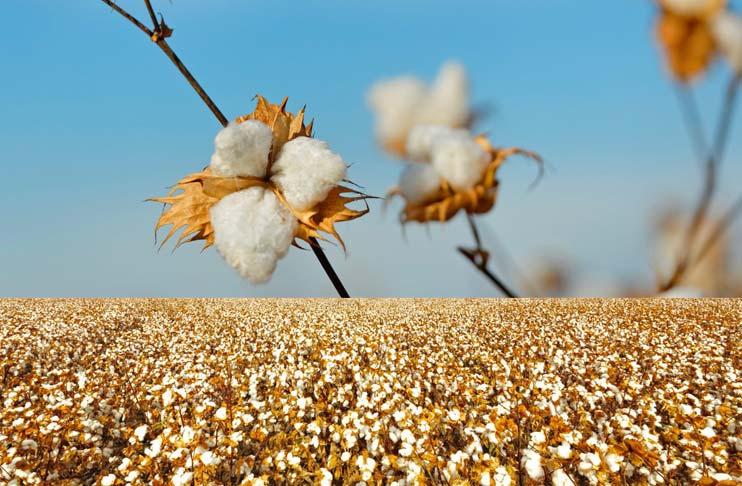
Read on to learn the basics, get the inside scoop, and discover some surprising (and possibly apocryphal—see fact #5) tidbits about this premium, luxurious cotton.
What is Supima cotton?
First things first: Supima cotton is used to designate high-quality American-grown Pima cotton, an extra-long staple cotton (ELS). Supima® is a trademarked brand controlled by a non-profit organization of the same name.
The non-profit, established in 1954, only allows licensed companies to use the name Supima, a portmanteau of superior Pima. Growers, textile mills, manufacturers, and apparel brands need to meet strict quality requirements to earn the right to call their American-grown Pima cotton Supima cotton.
What’s the difference between Supima, Pima, and Egyptian cotton?
In short, all Supima cotton is American Pima, but not all Pima is Supima. Pima cotton generally refers to all ELS cotton grown in the US, Peru, Israel, and Australia. Pima may also be interwoven with lesser-quality cotton—only Supima cotton is guaranteed to be 100% American Pima. Products are often fraudulently labeled as Pima by suppliers who blend in or substitute less expensive cotton.
As Bloomberg recently reported, “It’s been an open secret among experts in the cotton industry that products often labeled as 100 percent Egyptian or Pima cotton are made in part or entirely of cheaper cotton.” According to Applied DNA Sciences, a forensic science biotech company cited in Bloomberg, 83% of tested products labeled 100% Pima were partially or entirely made of another type of cotton.
Egyptian cotton is, in theory, a similar high-quality ELS cotton. Unfortunately, fraud runs rampant: about 90% of products labeled “Egyptian cotton” are fake, as reported by The Wall Street Journal. Additionally, much of the cotton grown in Egypt that can be accurately called “Egyptian cotton” is merely long staple, not ELS, meaning the fibers are shorter, weaker, and coarser, leading to lesser-quality fabrics.
Now that we’ve covered the basics of Supima, let’s explore five fun facts about the brand.
Fact #1: Supima fibers are longer, stronger, and finer—which leads to a bevy of benefits
A cotton’s fibers need to be at least 1 3/8” long to earn the extra-long staple (ELS) designation, but Supima is one of the longest ELS cottons around. With an average length over 1 7/16”, Supima’s long fibers and superior strength result in a stronger yarn. This means Supima fabrics can be made finer (lightweight) and softer than other cotton counterparts.
Additionally, Supima’s fibers themselves are much finer than their conventional counterpart varieties. Fiber fineness, combined with length and strength, result in a silky feel, luxurious luster, less pilling, and the ability to achieve greater color shade depth.
Fact #2: Pima is only 3% of American-grown cotton and 1% of global cotton—Supima is even rarer
Only 3% of the cotton grown in America is Pima, and even less than that qualifies to bear the Supima name. The grand majority of American cotton is of the upland variety, primarily grown around the Delta region, the Southeast, and Texas.
Fact #3: Supima cotton can only grow in desert climates
American Pima can only be grown in a few select regions, like the Southwest and Far West region; that’s because the premium plant requires a nice long growing season in a hot, arid environment. Rather than being rain-fed, Supima cotton plants need to be fully irrigated.
Fact #4: American Pima cotton used to be called American-Egyptian cotton
Back in the 19th century, American ELS cotton was called “American-Egyptian,” to convey the quality that Egypt’s fabrics were famous for at the time. In 1910, the name was changed to Pima to honor the Native American Pima people who grew the cotton for the USDA when the federal government began a breeding program to perfect ELS cottons.
Fact #5: The earliest denim coveralls from the Gold Rush may have been made from Pima cotton
Another fact which is a bit more anecdotal than the previous ones but does reinforce the idea that great durable quality can be the most logical option for value. It has been stated that Levi Strauss has used ELS cotton for their denim fabrics; produced by Amoskeag Manufacturing since the mid-1800s. This ELS cotton variety was shipped from southern states like South Carolina and Georgia to Massachusetts. Even Supima’s own investigation on denim fabric remnants; which were discovered in abandoned gold mines, proves through DNA analysis; that indeed ELS cotton was used in that time period of the Gold Rush.
We like to think that ELS cotton was used because; the workers back then needed garments that were strong and durable and lasted for years. With the advent of modern spinning methods combined with Pima’s inherent strength; Supima continues this American tradition of quality, reliability, and value.
Supima is among the most luxurious, sought after cotton varieties in the world. No wonder it’s been used in all kinds of premium apparel; from fine shirting and hosiery to towels, sheets, and even medical wear.
Written by Buhler Quality Yarn



